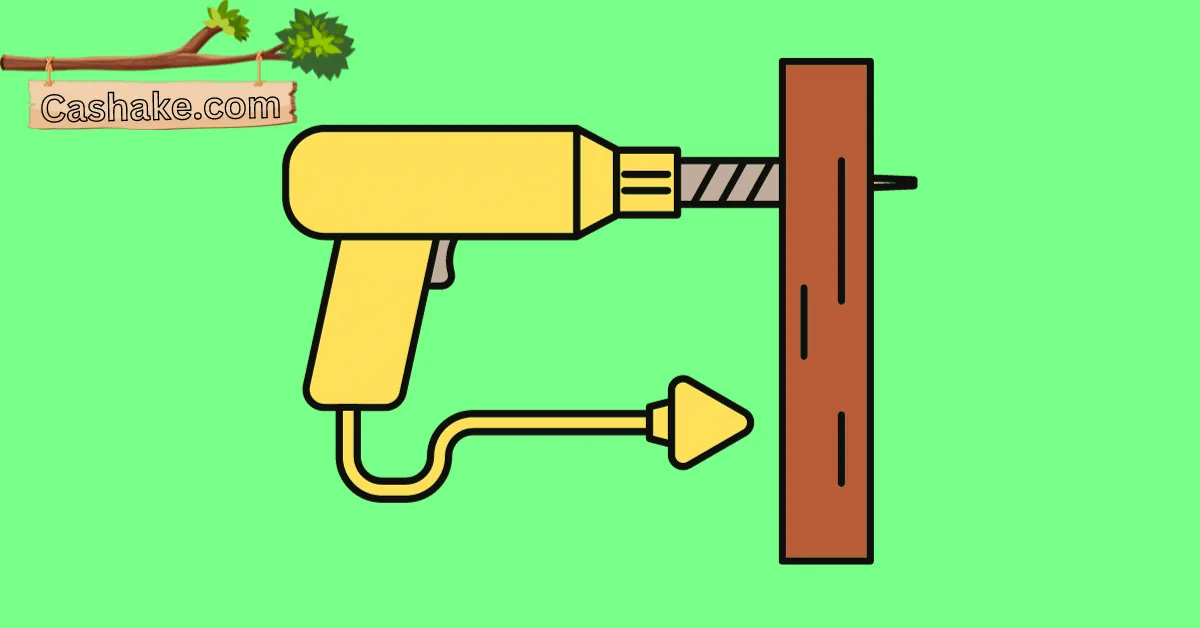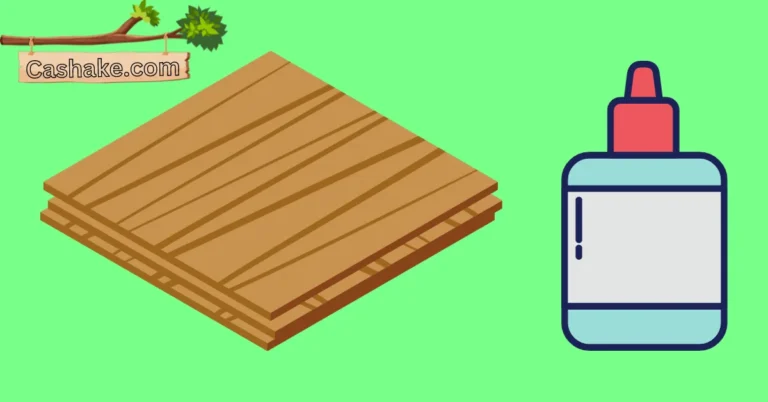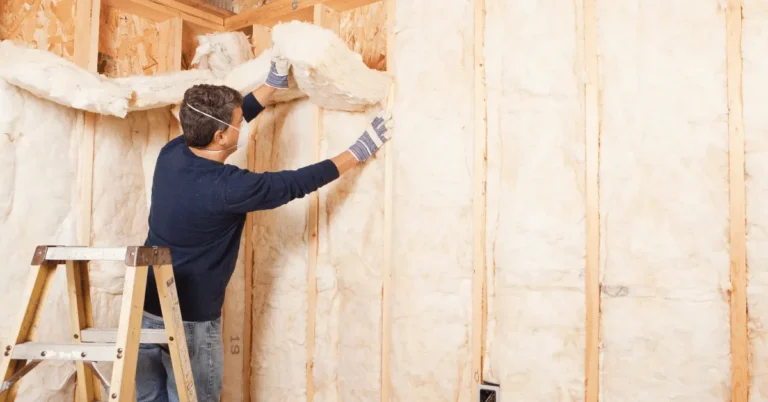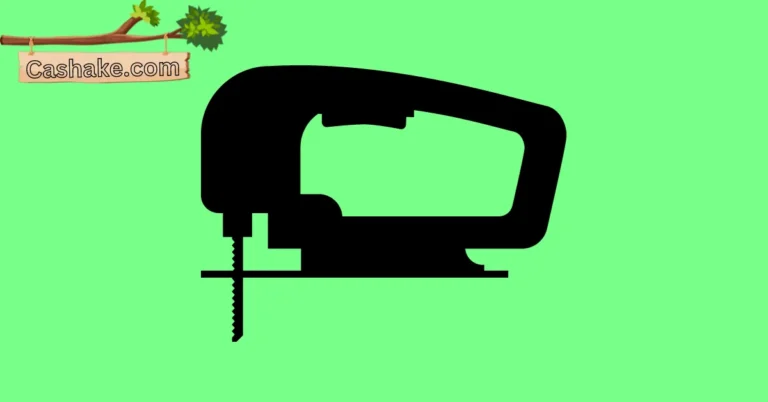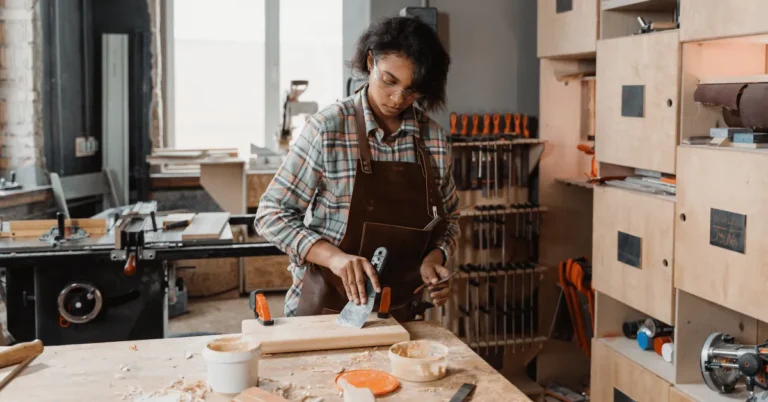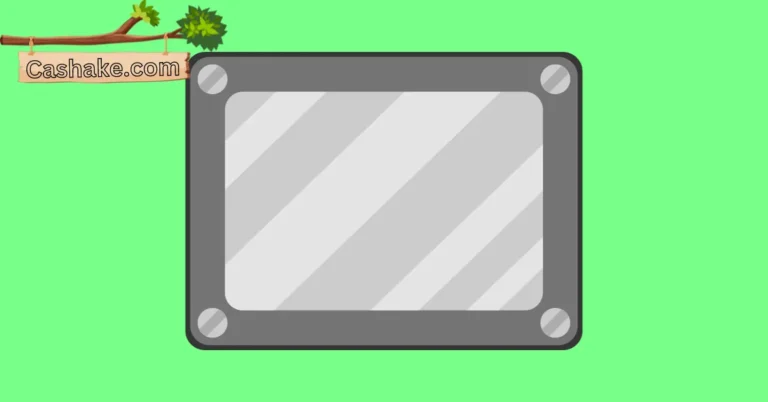What is The Best Tool For Cutting Square Holes in Wood?
In the exciting world of woodworking, where precision and craftsmanship are the name of the game, we often find ourselves faced with the intriguing challenge of cutting square holes in wood.
Whether you’re just starting on your woodworking adventure or you’re a seasoned pro looking to level up your skills, the hunt for that perfect tool is key.
In this laid-back guide, we’re going to explore the array of tools you can play around with to make this happen.
We’ll chat about what’s awesome and not-so-awesome about each one, and we’ll throw in some must-consider factors for choosing the right tool for your gig.
I’ve got all the tips and tricks for slicing square holes in plywood and hardwood, no matter if they’re small or large.
Ultimately, your this question is going to get solved: What is The Best Tool For Cutting Square Holes in Wood?
So, let’s jump right into the world of woodworking precision and discover the ultimate tool for nailing those square holes in wood.
Key Takeaways
- Choose the right tool based on hole size and precision.
- Prioritize safety with safety gear and secure wood placement.
- Keep tools sharp for cleaner cuts and smoother edges.
- Templates aid accuracy; make or buy them as needed.
- Start with a budget-friendly coping saw for beginners.
- Advanced users can opt for precise mortisers for perfection.
- Mark outlines meticulously with a square and pencil.
- Slow and steady wins with power tools; follow instructions.
- Chisel or sandpaper edges for a polished finish.
- Explore used tools and share woodworking tips with the community.
What are the different tools that can be used to cut square holes in wood?
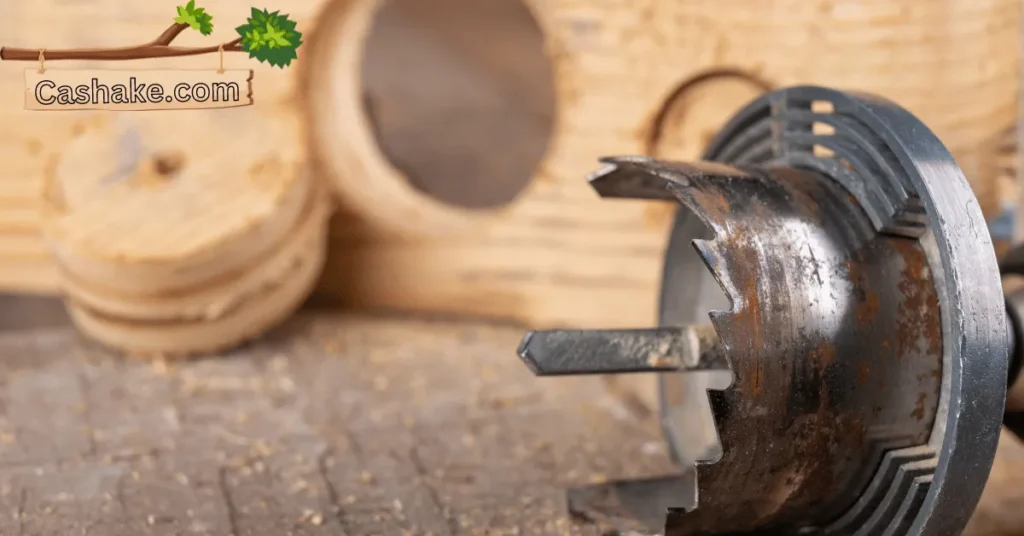
When it comes to carving square holes in wood, you’ve got a bunch of tools to choose from. Your pick depends on what you’re working on, how tricky it is, and how precise you want to be.
Handy Hand Tools
- Coping Saw: This slender-bladed champ is perfect for intricate shapes, including square holes. It’s your go-to for small holes in thin wood.
- Ryoba Saw: From Japan, this bad boy has a double-edged blade for crosscutting and ripping. It’s all about precision and sharpness, and you can use the ripping side for square holes.
- Dozuki Saw: Another Japanese contender, the Dozuki has a thin blade and is all about those precise cuts. It’s your buddy for square holes when you want perfection.
Powerful Power Tools
- Router: This versatile power tool can craft all sorts of shapes, even square holes. Grab a straight bit and a template, put the template on the wood, and let the router follow it to carve your square hole.
- Jigsaw: If you’re dealing with larger or thicker wood, the jigsaw’s got your back. Use a straight blade and a square guide, position it over the wood, and let the jigsaw work its magic.
- Mortiser: For serious square hole action, the mortiser is the way to go. It’s super efficient and accurate, but it’s also the priciest option. You’ll need a mortise chisel bit for this one, and it plunges into the wood to make that perfect square hole.
Other Tricks Up Your Sleeve
- Drill and Chisel: If you’re feeling old-school, you can go with a drill and chisel combo. It might not be as precise or quick as power tools, but it gets the job done. Drill holes around the square’s perimeter and then chisel away the wood between them.
Choosing Your Weapon
The tool you choose depends on your project. Coping saws are great for small holes in thin wood, while routers, jigsaws, or mortisers are your buddies for larger or thicker wood. If you’re all about accuracy and efficiency, the mortiser is the top dog.
Safety First
No matter which tool you go with, safety is key. Always wear your safety glasses and gloves. Make sure that the wood is securely in place before you start, and follow the manufacturer’s instructions like your life depends on it.
What are the advantages and disadvantages of each tool?

Let me make it simple for you and that’s why I want to create a table for you.
Here is the table:
| Tool | Advantages | Disadvantages |
|---|---|---|
| Coping saw | Can be difficult to control, and not as accurate as other tools | Can be dangerous if not used properly, and expensive |
| Ryoba saw | Precise cuts, sharp blade | Can be difficult to use for beginners |
| Dozuki saw | Precise cuts, sharp blade, good for cutting intricate shapes | Can be difficult to use for beginners, expensive |
| Router | Versatile, accurate, efficient | Can be difficult to control, and not as accurate as other tools |
| Jigsaw | Easy to use, good for cutting large holes or holes in thick wood | Can be difficult to control, not as accurate as other tools |
| Mortiser | Most accurate and efficient way to cut square holes | Expensive, specialized tool |
| Drill and chisel | Inexpensive, versatile | Time-consuming, not as accurate as other tools |
Let’s break it down:
Starting Simple: If you’re just dipping your toes into the world of woodwork and want something straightforward and budget-friendly for square holes, Coping saws and Ryoba saws are your pals.
Precision Pursuit: Now, if you’re up for a bit more challenge and craving that pinpoint accuracy, the Dozuki saw is the way to go. It might be trickier, but it’s worth it.
Handle with Care: Hold on tight when it comes to routers and jigsaws. They’re cool for square holes, but they can be a bit wild if you don’t follow the rulebook. Read and stick to the manufacturer’s instructions like your life depends on it.
The Creme de la Creme: When precision is your middle name and efficiency is your game, the mortiser takes the crown. It’s like the Formula 1 of hole-making. But remember, it’s also the priciest kid on the block.
In a Nutshell: The tool you need depends on your gig:
- If you’re a rookie, start with a Coping saw or Ryoba saw.
- Need to tackle a beastly hole or some thick wood? Router or jigsaw it is.
- If you’re all about that perfect cut, make friends with the mortiser.
Choose your weapon wisely, and happy woodworking!
What factors should I consider when choosing a tool for cutting square holes in wood?

When you’re in the game of picking the right tool to carve square holes in wood, there’s a bunch of things to think about. Let’s break it down:
1. Hole Size and Complexity: First up, think about how big and fancy your hole needs to be. If you’re going for dainty holes in skinny wood, like for delicate projects, grab a coping saw or Ryoba saw.
But if you’re wrangling hefty holes or thick wood, you’ll want the big guns—think routers, jigsaws, or mortisers.
2. Precision Play: How precisely do you need to be? If perfection is your jam, then the mortiser’s the MVP. But if you can cut a little slack on precision, a router or jigsaw can do the job just fine.
3. Skill Level: Your skill level matters. If you’re starting, the newbie-friendly coping saw or Ryoba saw is your bestie.
Got some woodworking wizardry under your belt? Consider the router or jigsaw. Mortisers, though, are like the black belt of tools and need some serious skill and practice.
4. Budget Business: Money talks, right? Coping saws and Ryoba saws are usually kinder to your wallet. On the flip side, routers, jigsaws, and mortisers can get a bit spendy, especially when you factor in all those extra bits and pieces.
Now, here are a few more tips to help you on your tool-picking journey:
5. Call in the Experts: If you’re scratching your head about which tool to go for, don’t sweat it. Talk to a woodworking whiz. They’ll give you the inside scoop and help you figure out what’s best for your project.
6. Do Your Homework: Before you make the buy, read some tool reviews. They’re like the Yelp of the woodworking world and can steer you in the right direction.
7. Secondhand Search: Lastly, consider the world of used tools. You might score a quality used one at a garage sale, flea market, or pawn shop. It’s a money-saving move that still gets the job done.
By weighing these factors and rolling with these tips, you’ll be the master of picking the perfect tool for your square hole adventures.
What are some tips for cutting square holes in wood?

It is so important to get tips from the experts and that’s why below are some of the best tips for you. Here are some handy tricks for making square holes in wood:
Keep Those Tools Sharp: The secret to getting a nice and tidy square hole is to kick things off with some razor-sharp tools. Not only do sharp tools make the job easier, but they also leave you with a smoother cut.
Measure Your Hole with TLC: Start by marking out your square hole carefully on the wood. Grab a square and a trusty pencil to sketch it out. Keep those lines straight, and those corners perfectly square.
Lean on Templates: Thinking about going the template route? It’s a smart move. Templates, whether homemade from wood or plastic or store-bought, can be your best pals when it comes to cutting a square hole spot on.
Lock It Down: Before you dive into cutting, be sure to securely clamp or screw down that wood onto a workbench. This step is crucial to prevent any wood wiggling during the cut, which can ruin your square groove game.
Easy Does It: When it’s time to cut, take it slow and steady. Patience and precision are key, especially if you’re wielding power tools. Always stick to the manufacturer’s instructions when using those.
Now, let’s talk tools:
Coping Saw or Ryoba Saw: Opt for a fine-tooth blade with these saws to ensure a neater cut.
Router: If you’re rocking a router, grab a straight bit and pair it with a trusty template. For deeper holes, take it one pass at a time.
Jigsaw: Use a straight blade and a square guide with your jigsaw. If you need to go deeper, give the jigsaw base a little tilt while you’re at it.
Mortiser: If the mortiser’s your weapon of choice, go for a mortise chisel bit. For some extra depth, make a few passes with the mortiser.
And when you’ve nailed that square hole, don’t forget the finishing touch. Grab a chisel or some sandpaper to smooth out those edges and give your project that pro-grade finish.
What is the best tool for cutting square holes in wood for beginners?
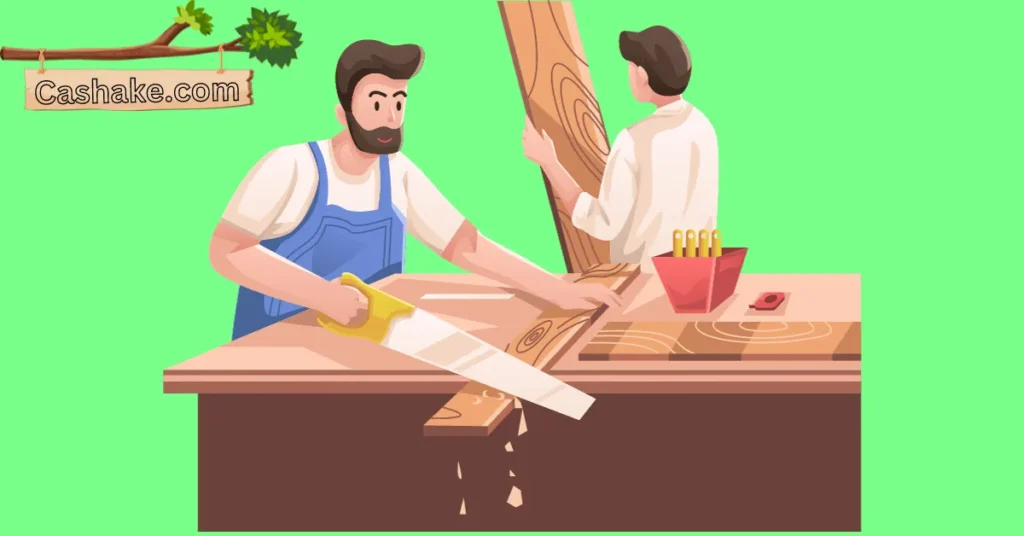
Looking to tackle square holes in wood, especially if you’re just starting? Well, let me introduce you to your new best buddy: the coping saw. It’s not only budget-friendly but also pretty user-friendly, making it a great pick for beginners.
Here’s the lowdown on using a coping saw to cut square holes:
- Grab a square and a pencil, then mark out the hole’s outline on your wood.
- Drill a pilot hole at each corner of the square.
- Slip the coping saw blade into one of those pilot holes, and let the cutting begin.
- Stick to that marked outline, taking it slow and easy.
- Once all four sides are done, tidy up the edges with a chisel.
Now, some quick tips for a smoother ride with your coping saw:
- Go for a fine-tooth blade to keep things neat.
- Keep that saw blade nice and perpendicular to the wood.
- Use short, even strokes for a clean cut.
- Don’t go overboard with pressure; you don’t want to snap that blade.
If you’re a woodworking newbie, I’d suggest doing some practice rounds on scrap wood first. It’ll help you get the hang of the coping saw and ensure you’re all set for a top-notch cut.
Once you’ve aced coping saw basics, you can level up to other tools like a router or jigsaw for your square hole adventures.
But remember, the coping saw is like your trusty training wheels – simple, effective, and perfect for beginners.
What is the best tool for cutting square holes in wood for professionals?

When it comes to the woodworking big leagues, pros know that the go-to tool for crafting those perfect square holes in wood is the trusty mortiser.
This specialized machine is purpose-built for one thing: making square holes in wood with absolute precision.
Whether you’re in the cabinetmaking, carpentry, or furniture-making game, the mortiser is your ace in the hole.
Here’s your playbook for getting the job done like a pro:
- First up, use a square and a pencil to sketch out the square hole’s shape on your wood.
- Secure that wood nice and tight on your mortising machine to keep things steady.
- Pick the mortise chisel bit that matches your hole size.
- Power up the mortising machine and gently lower that chisel bit into the wood, starting at one of the corners of your marked square.
- Methodically move the chisel bit across the wood, sticking to your marked outline until your square hole is good to go.
- Rinse and repeat steps 4 and 5 until your hole is complete.
Now, here’s why pros love their mortisers:
- They’re the gold standard for precision and efficiency when it comes to square-hole action.
- Mortisers can handle square holes of all shapes and sizes, offering versatility for a range of woodworking tasks.
- Whether your wood is hard as oak or soft as pine, mortisers can handle it.
- Once you’ve got the basics down, mortisers are pretty straightforward to use.
But, there are a couple of things to keep in mind. Mortisers can be a bit of a splurge compared to other square-hole-making tools like routers or jigsaws. Plus, they’re specialized gear, so they might not be a must-have for every woodworking project.
For the seasoned pros who demand square hole perfection regularly, a mortiser is worth its weight in gold.
But if you’re more of a hobbyist or an occasional woodworker, those router and jigsaw alternatives might be a better fit for your budget and needs.
How to cut square holes in plywood?

When it comes to cutting square holes in plywood, you’ve got a toolbox full of options depending on your hole’s size and how precise you want to get. Let’s break down some common tools and methods:
Coping Saw: This handheld champ is perfect for small holes in thin plywood. Here’s the playbook:
- Mark out your hole with a square and pencil.
- Pop a pilot hole at each corner.
- Slide your coping saw blade into one pilot hole and get cutting.
- Carefully follow your marks, taking it slow.
- When all four sides are done, give those edges a clean-up with a chisel.
Jigsaw: When you’re dealing with bigger or thicker plywood, a jigsaw is your go-to power tool. Here’s the drill:
- Square-and-pencil your hole outline on the plywood.
- Drill a pilot hole in one corner.
- Slip in your jigsaw blade and start the show.
- Stick to the lines and take it easy.
- Once you’ve squared away all four sides, tidy up those edges with a chisel.
Router: If you’re all about precision (and you don’t mind spending a bit more), the router is your bestie. Here’s how it rolls:
- Craft a template from wood or plastic.
- Strap that template onto your plywood and lock it down tight.
- Load up a straight router bit.
- Follow your template’s path, routing out the hole.
- When you’ve gone all the way around, ditch the template and smooth those edges with a chisel.
No matter which tool you’re rocking, safety is the name of the game. Don those safety glasses and gloves, make sure that plywood isn’t going anywhere, and follow the manufacturer’s tool rules.
Extra tips to keep things smooth:
- Sharp tools make life easier and your cuts cleaner.
- Be dead-on with your marking; a square and a pencil are your BFFs.
- Templates can be your accuracy sidekick – make your own or buy one.
- Lock that plywood down; wiggling is not your friend during cutting.
- Slow and steady wins the square hole race, especially with power tools.
- And after the hole’s done, a chisel or some sandpaper will give you that polished finish.
How to cut square holes in hardwood?
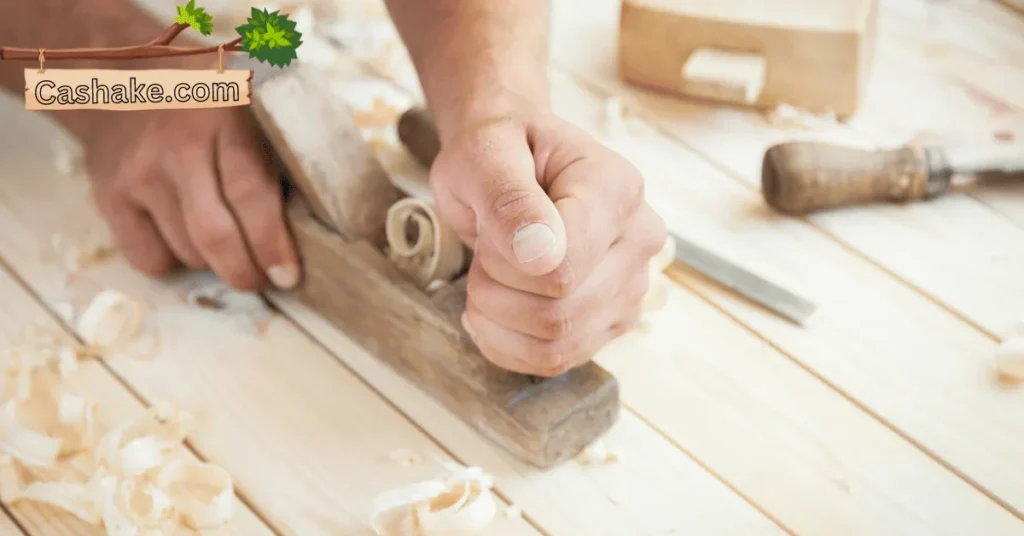
When it comes to carving square holes in tough hardwood, you’ve got a toolbox full of options, depending on the size of your hole and how picky you are about precision. Let’s dive into some common tools and how to work them:
Mortiser: This is like the Ferrari of hole-cutting machines, perfect for precise square holes, especially in hardwood. But fair warning, it’s not the cheapest ride. Here’s your roadmap:
- Square-and-pencil your hole outline on the hardwood.
- Strap that hardwood to the mortising machine, making sure it’s locked in tight.
- Grab the mortise chisel bit that fits your hole and install it.
- Fire up the machine and gently lower that chisel bit into one of the hole’s corners.
- Follow your marked lines, moving the chisel a bit systematically.
- Keep repeating steps 4 and 5 until your square hole is good to go.
Router: This versatile power tool can handle more than just square holes, but it requires a steady hand. Here’s the deal:
- Create a hole template from wood or plastic.
- Slap that template onto your hardwood and clamp it securely.
- Load up a straight router bit.
- Trace the template’s outline while you route the hole.
- After you’ve gone all the way around, ditch the template and tidy up those edges with a chisel.
Jigsaw: When you’re dealing with larger or thicker hardwood, the jigsaw is your wingman. But remember, slow and steady wins the race. Here’s your jigsaw game plan:
- Square-and-pencil your hole’s shape on the hardwood.
- Drill a pilot hole in one corner.
- Pop in the jigsaw blade and start the show.
- Stick to those lines and take it slow.
- After you’ve got all four sides, clean up those edges with a chisel.
Safety first, folks! Don those safety glasses and gloves, clamp that hardwood down securely, and follow the toolmaker’s playbook.
Some extra tips to keep your square holes looking sharp:
- Sharp tools make the job easier and leave cleaner results.
- Be dead-on with your marking; a square and pencil are your pals.
- Templates can be a real lifesaver – make your own or buy one.
- Lock that hardwood down; wiggling is not your friend during cutting.
- Slow and steady is your motto, especially when using power tools.
- Once the hole’s done, a chisel or some sandpaper will give you that polished finish.
How to cut small square holes in wood?

When you’re in the business of crafting small square holes in wood, it’s like having your mini woodworking adventure.
But hey, you’ve got options, depending on the size of the hole and how much perfection you’re chasing. Let’s break it down:
Coping Saw: Think of it as your artsy companion, perfect for those intricate cuts, even in small square holes. Here’s the deal:
- Square-and-pencil your hole’s shape on the wood.
- Drill pilot holes at each corner of your square.
- Slide that coping saw blade into one of those pilot holes and get cutting.
- Carefully trace your marked lines, taking it slow and steady.
- When all four sides are done, give those edges a little love with a chisel.
Jigsaw: This power tool is your friend when it comes to shaping all kinds of holes, small squares included. Here’s the game plan:
- Square-and-pencil your hole’s outline on the wood.
- Drill a pilot hole in one of the corners.
- Pop in the jigsaw blade and let the magic begin.
- Stick to your lines and go slow and easy.
- After all four sides are sorted, tidy up with a chisel.
Drill and Chisel: It’s old-school and might take a tad longer, but it works. Here’s how:
- Mark your hole’s shape on the wood with a square and pencil.
- Drill a bunch of holes inside that shape, leaving about 1/8 inch between them.
- Get out your chisel and start removing the wood between those holes, following your marked lines.
- Finish things up by smoothing those edges with a file or sandpaper.
Safety first, folks! Put on those safety glasses and gloves, clamp that wood in place like it’s your prized possession, and don’t forget to follow the toolmaker’s rules.
Some bonus tips to make your small square hole adventures smoother:
- Keep those tools sharp; it’ll make your life easier and your cuts cleaner.
- Be meticulous with your marking; that square and pencil are your wingmen.
- Templates can be a lifesaver – you can DIY one or grab a store-bought gem.
- Lock that wood down tight; you don’t want any surprises during cutting.
- Slow and steady wins the race, especially with power tools.
- After your hole’s cut, give it some TLC with a chisel or sandpaper to make those edges shine.
How to cut large and deep square holes in wood?
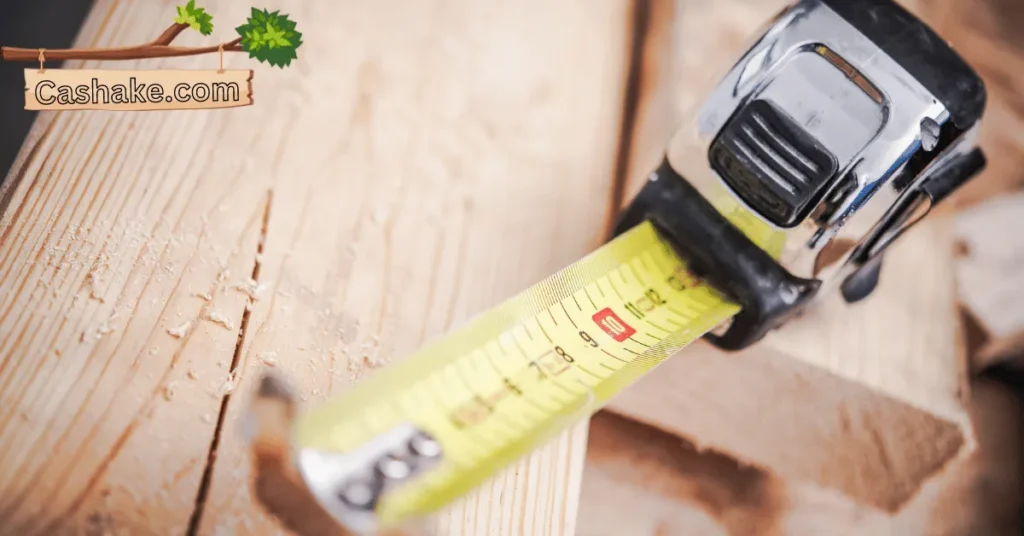
When you’re in the game of cutting those big and deep square holes in wood, there’s one tool that steals the show – the trusty router. Here’s the lowdown on how to make it happen:
Craft a Template: Start by whipping up a template from wood or plastic. Make sure it’s an exact match for the size and depth of your dream hole.
Lock Down the Template: Clamp that template onto your wood, making it stay put like it’s glued on.
Choose the Right Router Bit: Your router needs a straight bit that’s a perfect match for your template’s diameter.
Set the Depth: Dial in the router’s depth to match the hole you’re after.
Start Routing: Carefully follow that template’s outline with the router, letting it chew through the wood as you go.
Template Be Gone: After all four sides are in the bag, remove the template. Now, grab a chisel to give those edges a little makeover for a clean finish.
Oh, and if you’ve got a super-deep hole in your hands, don’t fret. You can make several passes with the router, gradually diving deeper each time.
Some bonus tips to keep in your back pocket:
- Keep those cutting tools sharp – it’s the key to an easier ride and cleaner results.
- Before you cut, make sure your hole’s outline is on point, drawn with a square and pencil.
- Templates are your secret weapon for precise square-hole action. You can craft your own or snag a fancy store-bought one.
- Lock that wood down tight – you don’t want it dancing around during the cut. Clamps are your best friends here.
- Slow and steady is the name of the game, especially when you’re wielding power tools. Follow the maker’s instructions like a pro.
- Once that hole’s in the bag, use a chisel or sandpaper to get those edges looking sharp and polished.
And remember, safety is the name of the game when working with tools, especially the power ones. Protect those peepers with safety glasses, slip on some gloves, and don’t forget a trusty dust mask to keep things clean and safe.
Important FAQs
Safety is paramount when working with tools. Always wear safety glasses and gloves.
Ensure the wood is securely clamped or fastened to prevent movement during cutting.
Follow the manufacturer’s instructions for the specific tool you’re using.
While it’s possible to cut square holes with a regular saw, it’s more challenging and less precise. Specialized tools like coping saws or routers are recommended for better results.
Coping saws are hand tools ideal for intricate cuts in thin wood. Jigsaws are power tools suitable for larger or thicker wood and provide faster cutting but may be less precise.
Consider factors such as hole size, complexity, required precision, skill level, and budget.
Consult woodworking experts or read tool reviews for guidance.
Evaluate whether a used tool might be a cost-effective option.
Coping saws are recommended for beginners. They are budget-friendly and user-friendly, making them a great starting point for woodworking enthusiasts.
Final Thoughts
In a nutshell, the world of woodworking offers a wide range of choices when it comes to cutting square holes in wood.
Whether you’re just starting on your woodworking journey or you’re a seasoned pro chasing perfection, there’s a tool that suits your needs.
From the wallet-friendly coping saw to the precision powerhouse known as the mortiser, each tool has its pros and cons.
When picking the right tool, think about factors like hole size, complexity, precision demands, skill level, and budget.
You can also tap into the wisdom of woodworking aficionados, dive into tool reviews, or even explore the secondhand market to make an educated decision.
How Do You Cut a Square Hole With a Jigsaw? (A Comprehensive Guide 2023)
Hey there! After checking out this article, you’ve gotta dive into “How Do You Cut a Square Hole With a Jigsaw? (A Comprehensive Guide 2023)” for some awesome DIY tips!
